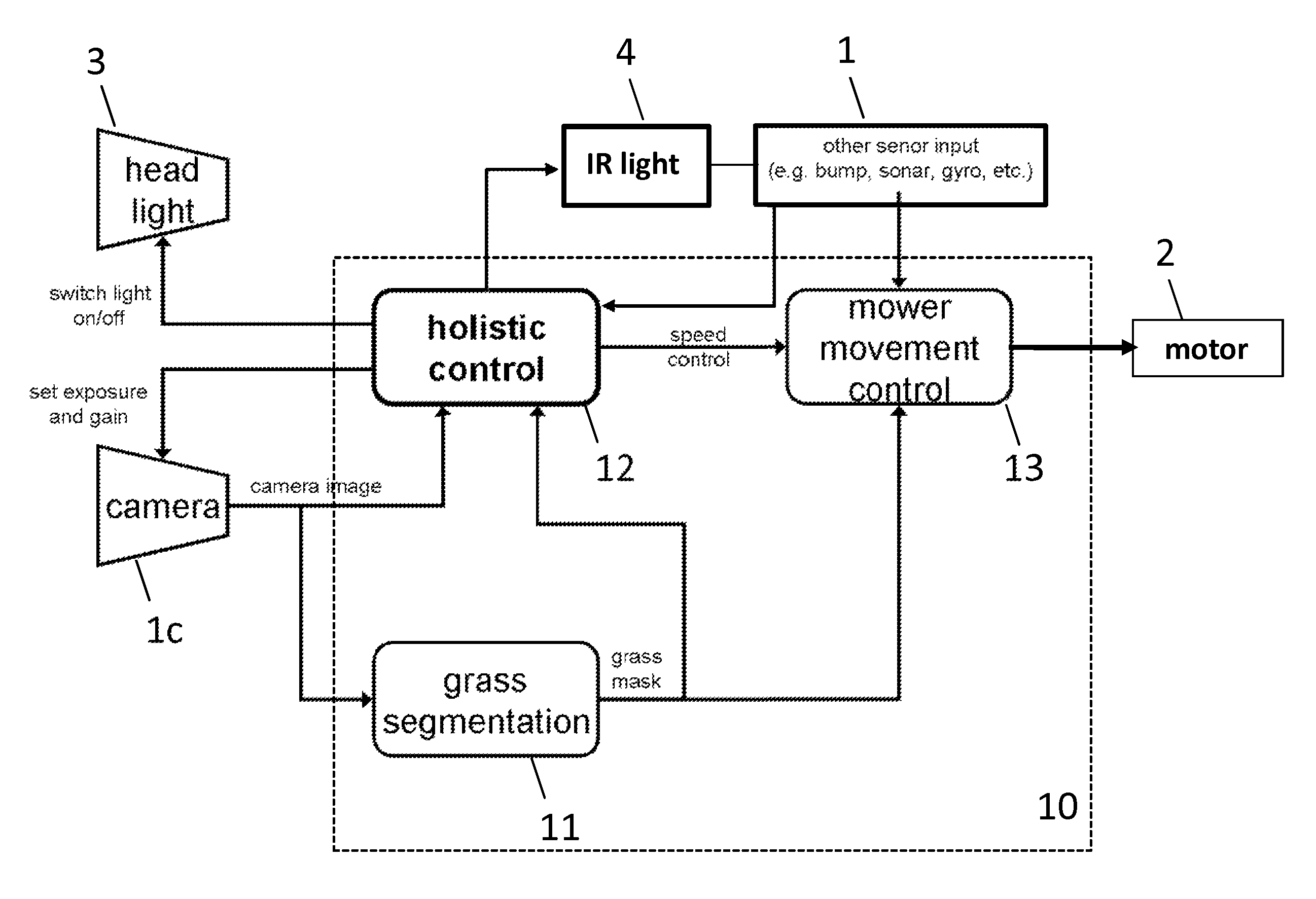System, method and apparatus for unsupervised adaptation of the perception of an autonomous mower
a technology of an autonomous mower and a system, which is applied in the direction of process and machine control, distance measurement, instruments, etc., to achieve the effect of improving the state of the art and improving the ability of autonomous mowers
- Summary
- Abstract
- Description
- Claims
- Application Information
AI Technical Summary
Benefits of technology
Problems solved by technology
Method used
Image
Examples
Embodiment Construction
[0054]The present invention relates to an automatic mower, which has at least one camera 1c, preferably a plurality of other sensors 1, like a sonar sensor is or infrared sensor 1i, at least one propulsion system, like a motor 2, and optionally at least one a head light or lighting means 3 and / or an IR light. Preferably, the mower is a lawn mower, but it can also be some other kind of mower. The mower is equipped with a control system 10.
[0055]The control system 10 of the mower has a module 11 for grass detection and a module 13 for motor control (i.e. control of the mower movement), which uses the output of the grass detection module 11 for issuing motor commands that for example allow the mower to avoid obstacles in its path or to navigate to a certain target, e.g. a home base for recharging the mower.
[0056]The control system 10 further comprises an intelligent holistic control module 12, which optimizes in particular the camera signal quality for grass detection by means of adapt...
PUM
 Login to View More
Login to View More Abstract
Description
Claims
Application Information
 Login to View More
Login to View More - R&D
- Intellectual Property
- Life Sciences
- Materials
- Tech Scout
- Unparalleled Data Quality
- Higher Quality Content
- 60% Fewer Hallucinations
Browse by: Latest US Patents, China's latest patents, Technical Efficacy Thesaurus, Application Domain, Technology Topic, Popular Technical Reports.
© 2025 PatSnap. All rights reserved.Legal|Privacy policy|Modern Slavery Act Transparency Statement|Sitemap|About US| Contact US: help@patsnap.com



